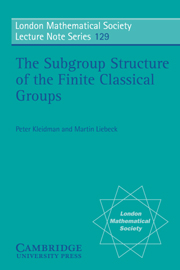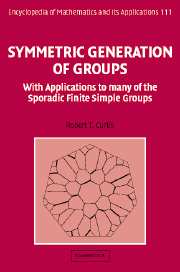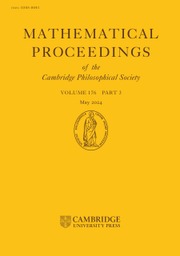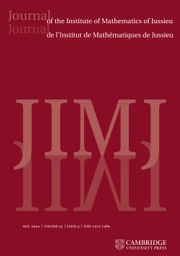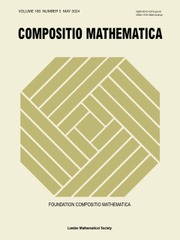Classical Groups, Derangements and Primes
£57.99
Part of Australian Mathematical Society Lecture Series
- Authors:
- Timothy C. Burness, University of Bristol
- Michael Giudici, University of Western Australia, Perth
- Date Published: January 2016
- availability: Available
- format: Paperback
- isbn: 9781107629448
£
57.99
Paperback
Other available formats:
eBook
Looking for an inspection copy?
This title is not currently available on inspection
-
A classical theorem of Jordan states that every finite transitive permutation group contains a derangement. This existence result has interesting and unexpected applications in many areas of mathematics, including graph theory, number theory and topology. Various generalisations have been studied in more recent years, with a particular focus on the existence of derangements with special properties. Written for academic researchers and postgraduate students working in related areas of algebra, this introduction to the finite classical groups features a comprehensive account of the conjugacy and geometry of elements of prime order. The development is tailored towards the study of derangements in finite primitive classical groups; the basic problem is to determine when such a group G contains a derangement of prime order r, for each prime divisor r of the degree of G. This involves a detailed analysis of the conjugacy classes and subgroup structure of the finite classical groups.
Read more- Provides an introduction to the basic properties and geometry of classical groups accessible to graduate students and researchers working in related areas
- Gives the first unified account of conjugacy and geometry of elements in classical groups bringing together results previously scattered throughout the literature
- Material on the study of derangements will be of particular interest to researchers working in the field of permutation groups
Reviews & endorsements
'This book should be an indispensable reference for anybody doing research, or wanting to do research, in this area. Even for nonspecialists, however, chapters 2 and 3 should be a useful source of information on classical groups.' Mark Hunacek, The Mathematical Gazette
Customer reviews
Not yet reviewed
Be the first to review
Review was not posted due to profanity
×Product details
- Date Published: January 2016
- format: Paperback
- isbn: 9781107629448
- length: 366 pages
- dimensions: 228 x 150 x 22 mm
- weight: 0.29kg
- contains: 3 b/w illus. 60 tables
- availability: Available
Table of Contents
Preface
Notational conventions
1. Introduction
2. Finite classical groups
3. Conjugacy classes
4. Subspace actions
5. Non-subspace actions
6. Low-dimensional classical groups
Appendix A. Number-theoretic miscellanea
Appendix B. Tables
References
Index.
Sorry, this resource is locked
Please register or sign in to request access. If you are having problems accessing these resources please email [email protected]
Register Sign in» Proceed
You are now leaving the Cambridge University Press website. Your eBook purchase and download will be completed by our partner www.ebooks.com. Please see the permission section of the www.ebooks.com catalogue page for details of the print & copy limits on our eBooks.
Continue ×Are you sure you want to delete your account?
This cannot be undone.
Thank you for your feedback which will help us improve our service.
If you requested a response, we will make sure to get back to you shortly.
×

